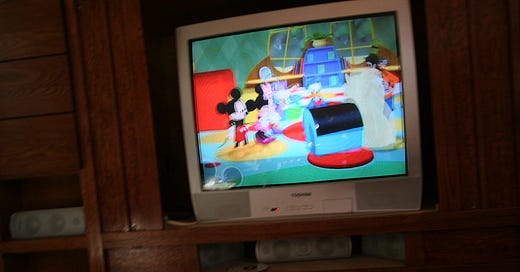What Happened to Saturday Morning? 📺
The tale of E/I programming, the federal regulation that zapped the energy out of the Saturday morning cartoon.
Hey all! Here’s another edition of Lesser Tedium, a version of Tedium that does the bare minimum to tell you a story. Want more content like this? Subscribe over this way.
A good sign that you aren’t Gen Z is what you were watching on Saturday mornings when you grew up.
For decades, the Saturday morning cartoon had a hallowed place among people under the age of 12. It was a lasting phenomenon, one that shaped generations of kids.
Why did it go away? Well, you could blame cable television for creating the circumstances that made it fade away. But another more likely factor could actually be the U.S. government.
A law passed in 1990 called the Children’s Television Act attempted to encourage broadcasters to air “educational and informative” programming that focused on learning over the overstuffed commercials that often appeared on television at the time instead. While Masters of the Universe and GI Joe were hugely popular, they were designed to promote toys.
The problem is, the law essentially discouraged broadcasters from putting any real effort in. Oh sure, they did at first—many of NBC’s teen programs in the early ’90s, like Saved By the Bell: The New Class, were classified as E/I. But over time, it led to a situation where educational programming was either bottom of the barrel or only focused on certain aspects of the educational experience. Like testing the Emergency Alert System, it was something local stations did because they had to.
And that meant that effort-free programming became the rule, not the exception. For years, Jack Hanna was a common sight in E/I programming blocks, and not recent Jack Hanna either. Shows about science were actually overrepresented on television because of the rules, which is ironic, because the sciences are often seen as underrepresented in modern educational settings. (Math almost never appeared, however.)
So where did all the good programming go? You probably guessed already—to cable television, where they didn’t have these rules, and then to streaming networks.
It’s one of those ideas that was meant to encourage companies to do the right thing. But instead, it just became a three-hour wasteland, an excuse to check a box.
» Wanna learn more? Check out our 2015 piece on niche television, one of many we’ve done over the years.





